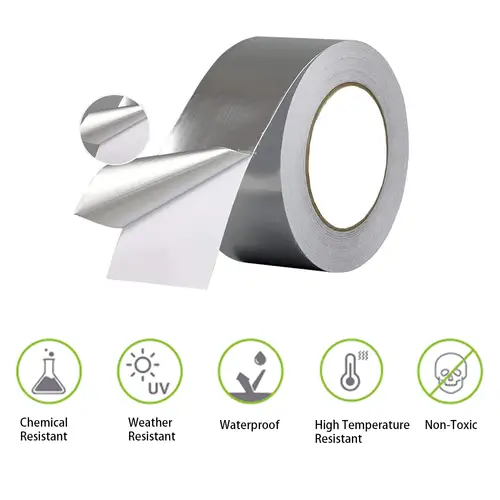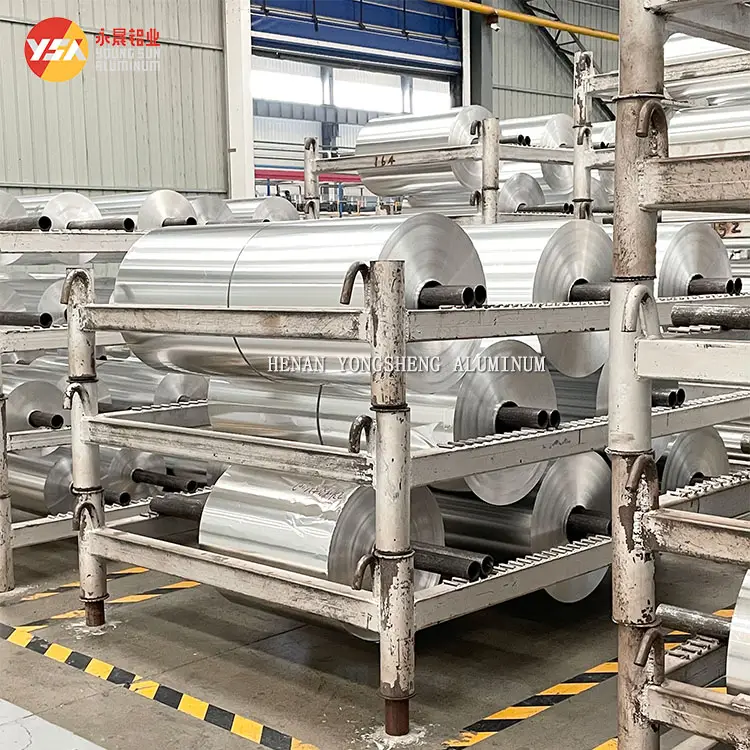Al-foil Tape
Al-foil Tape also called Aluminum foil tape, is a type of adhesive tape that features a backing made of aluminum foil. The Al-foil tape consists of a layer of aluminum foil that is coated with a pressure-sensitive adhesive on one side. This adhesive allows the tape to adhere tightly to different surfaces, providing a secure and durable bond.
What is foil tape used for?
Aluminum foil tapes are specifically designed for applications on seams and joints of fiberglass and aluminum backed duct boards. These tapes feature a rubber-based pressure-sensitive adhesive that offers exceptional vapor barrier properties and adheres well to irregular surfaces. They effectively seal the seams and joints, preventing air leakage and enhancing the overall efficiency of the duct system.
One of the key advantages of aluminum foil tape is its ability to conform to uneven surfaces, ensuring a tight and secure seal. It can easily adapt to the irregularities of the ductwork, providing a seamless and durable bond. Additionally, the tapes are coated with aluminum foil, which offers excellent thermal conductivity and acts as a shield for thermal insulation.

By using aluminum foil tape, you can effectively shield and cover thermal insulation materials, preventing heat transfer and reducing energy loss. The tape creates a protective barrier that enhances the insulation’s performance and maintains a consistent temperature within the duct system.
With their strong adhesive properties and ability to conform to irregular surfaces, aluminum foil tapes are a reliable solution for sealing seams, joints, and covering thermal insulation. They contribute to improved energy efficiency, enhanced thermal insulation, and overall system performance in various HVAC and ductwork applications.
Aluminum Al-foil tape offers several advantages due to its unique properties. It is highly resistant to moisture, UV rays, and chemicals, making it suitable for both indoor and outdoor applications. The tape’s thermal conductivity properties also make it useful for heat shielding and insulation purposes. Additionally, aluminum Al-foil tape is often used for HVAC (heating, ventilation, and air conditioning) systems, ductwork, and other sealing applications where airtightness and moisture resistance are crucial.

The versatility of aluminum Al-foil tape makes it a preferred choice in industries such as construction, automotive, aerospace, and packaging. It provides a reliable solution for sealing joints, repairing damaged surfaces, and providing thermal insulation. With its strong adhesion and excellent performance, aluminum foil tape is an essential tool for various applications that require durability and sealing effectiveness.
Alloy, thickness, temper of aluminum foil for tape
Alloy: The alloy used for aluminum foil tape is typically an aluminum alloy, commonly in the 1xxx or 8xxx series. These alloys offer good strength, flexibility, and corrosion resistance.
Thickness: The thickness of aluminum foil used for tape can vary depending on the specific application and requirements. It is usually measured in microns (µm) or mils (thousandths of an inch). Common thicknesses range from 20 microns (0.02 mm) to 150 microns (0.15 mm) or more.
Temper: Aluminum foil used for tape is typically supplied in a specific temper condition to meet the desired flexibility and strength. The most common temper for foil tape is “soft” (O temper), which provides excellent flexibility and conformability.
Surface Finish: The surface of the aluminum foil can have different finishes, such as bright, matte, or embossed. The choice of surface finish depends on the specific application requirements.

When was aluminum foil invented?
Aluminum foil was invented in the early 20th century. The exact year of its invention is credited to 1910 when the process for producing aluminum foil was developed by a Swiss engineer named Robert Victor Neher. Neher’s breakthrough involved refining the rolling process for aluminum, which allowed for the production of thin sheets of aluminum foil.
Initially, aluminum foil was primarily used for wrapping chocolate bars and packaging cigarettes. Over time, its versatility and excellent barrier properties led to its widespread use in various industries, including food packaging, insulation, and cooking.

